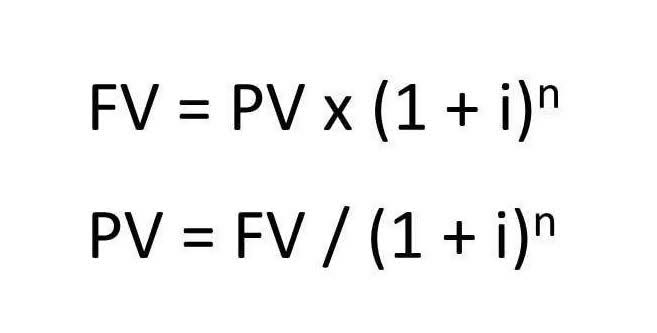
The inherent conflict naturally goes against joint decisions because each team can have conflicting priorities. Thus, it’s crucial to establish a unified goal that income summary everyone in the organization can agree on. Effective organizational decision-making is crucial for better business outcomes.

Cost-Benefit Analysis Process: Step-By-Step
The next step would be to compile an explicit list of all the expected costs and benefits. This list is central to making a decision the main goal of using a cost-benefit analysis is to reach a as it defines the variables being compared. There are several types of costs and benefits that can be considered, some more obvious than others. It’s common for policymakers to use a cost-benefit analysis to weigh the pros and cons of such a decision.
Cost Benefit Analysis — How To Ensure Investments Work Out
That does not mean you shouldn’t try, though; there are many software options and methodologies available for assigning these less-than-obvious values. Similarly, decide what metric you’ll be using to measure and compare the benefits and costs. Identify the goals and objectives you’re trying to address with the proposal.
Limitations of Cost-Benefit Analysis
And yes, that means you need to sift through the options and choose the one that brings the most value without weighing you down with excessive costs. With cost-benefit analysis, a degree of forecasting is built into the process. Aspire’s latest features automate workflows, empower your teams to manage budgets, enhance account security, data privacy and make payments with greater ease. Be transparent about the Bookstime methodology, assumptions and limitations of your analysis.

While a desire to make a profit drives most companies, there are other, non-monetary reasons an organization might decide to pursue a project or decision. In these cases, it can be difficult to reconcile moral or “human” perspectives with the business case. By reducing a decision to costs versus benefits, the cost-benefit analysis can make this dilemma less complex. The way that many businesses, organizations, and entrepreneurs answer these, and other, questions is through business analytics—specifically, by conducting a cost-benefit analysis. As mentioned in Step 1, having more costs or benefits alone doesn’t tell us much unless we assign specific values to each item.
Cost Benefit Analysis Example
Still, the CBA process should not be used as a blanket solution for every decision because of the effort required to generate a clear outcome. It turns out that after mapping out his timeline, the project’s actual costs were much more than he expected—thus leaving him with a ratio of 0.86. The cost-benefit analysis process is a great way to evaluate significant projects and their effect on your finances and customers. Net Present Value is used to find the present value (PV) of the costs and benefits of a project so that it can be easily translated into a readable, understandable equation for the decision-makers. Simply put, you can translate costs and benefits into risk versus reward to gain clarity on what’s best for your business. Boardmix, a groundbreaking online whiteboard solution, is poised to revolutionize your cost-benefit analysis process.

- Now, list out all the potential costs – think materials, labor, time, and benefits, like increased revenue, efficiency gains, or intangible perks.
- CBA is especially valuable in these scenarios, helping decision-makers make informed choices about resource allocation, policy formulation, and project viability.
- After running through these steps, you can implement CBA precisely to fit the requirements of your project.
- The net present value is the difference between the present value of benefits and the present value of costs.
- The basic principles and framework can be applied to virtually any decision-making process, whether business-related or otherwise.
But the concept of CBA as we know it dates to Jules Dupuit, a French engineer, who outlined the process in an article in 1848. Say you’re a business owner considering investing in a new piece of machinery. The machine is expensive, but it could boost your productivity and revenue. The company is considering purchasing a new machine that could increase production efficiency. For example, you can evaluate prospective improvements in repeat business and client retention to calculate the value of enhanced customer happiness.
With these features at your disposal, conducting cost-benefit analysis becomes not just simpler but also more efficient and effective with Boardmix. The hard truth is that most businesses aren’t profit planning properly or nearly enough. Many are stuck in their old ways using outdated strategies, overlooking critical factors, or worse, flying by the seat of their pants with no real plan at all…. This process shines a light on those hidden elements, ensuring nothing is overlooked. Kick things off by setting clear objectives and defining the scope of your analysis. This sets the stage for everything that follows, ensuring you’re working within a structured and focused context.
- Estimate the future value of your project costs and benefits and think about all the non-financial benefits that a project proposal might bring.
- For example, the purpose might be “to decide whether to expand to increase market share” or “to evaluate the benefits of overhauling the company website.”
- It considers factors like workloads, salaries, training periods, and more, helping you make an informed and well-considered choice.
- Benefits that are hard to measure such as increased staff morale and customer satisfaction.
- Give these opportunity costs a monetary value to conduct a more thorough study.
- This comparison is the heart of your analysis—it shows you which choices give you the most financial upside.
The Importance of Cost Benefit Analysis: Maximizing Value and Avoiding Pitfalls
The benefits can include estimated sales of the new product, market development possibilities, and potential for improved brand awareness. Creating a cost-benefit analysis may seem overwhelming, but I’ve made a clear step-by-step approach that will simplify the process. After running through these steps, you can implement CBA precisely to fit the requirements of your project. A cost-benefit analysis enables firms to compare several projects based on their net monetary benefits, prompting them to invest in the project yielding the highest cost-benefit. The payback period is a simple formula that determines the time period required for the benefits of the project to repay the costs.